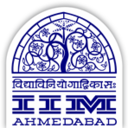Six persons - P, Q, R, S, T and U were born on either 9th or 26th of January, February and March in the same year, but not necessarily in the same order.
Two persons were born between Q and T, who was born immediate before R.
Q was born on the odd-numbered date.
| | Case 1 | Case 2 |
| Dates | Months | Persons | Persons |
| 9th | January | Q | |
| 26th | | | T |
| 9th | February | | R |
| 26th | | T | |
| 9th | March | R | Q |
| 26th | | | |
The total number of persons born after U is equal to the total number of persons born before S. Thus, case 1 is invalid.
| | Case 2 | Case 2a |
| Dates | Months | Persons | Persons |
| 9th | January | U | S |
| 26th | | T | T |
| 9th | February | R | R |
| 26th | | | |
| 9th | March | Q | Q |
| 26th | | S | U |
Atleast two persons were born between P and S. Thus, case 2 is invalid.
Therefore, the final arrangement is:
| Dates | Months | Persons |
| 9th | January | S |
| 26th | | T |
| 9th | February | R |
| 26th | | P |
| 9th | March | Q |
| 26th | | U |
Both statements I and III are true.
 Study Notes
Study Notes Mock Tests
Mock Tests Previous Year Papers
Previous Year Papers Category
Category

































































































